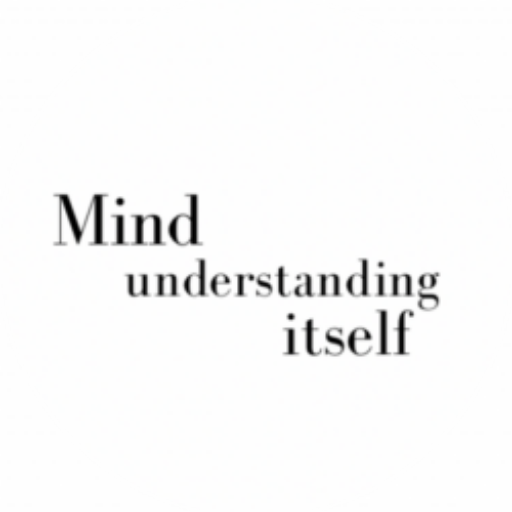How to Challenge Automatic Thoughts in CBT
In one of our previous posts, we examined What Automatic Thoughts are and How to Identify Them Using CBT Techniques.
In this post, I will try to tell you about how to challenge automatic thoughts in Cognitive Behavioral Therapy.
You might have identified more than one automatic thought that you would like to work on. We suggest that you firstly focus on the one that seems to be causing the most powerful feeling, the hot thought as we call it.
1. Question the Accuracy of Your Stressful Thought
In a Cognitive Behavioral Therapy session, what the therapist and the client do together is considered as a work of two specialists.
As the therapist is considered a specialist on helping people to solve their problems, the client is considered a specialist on his/her own problems.
The two work together just like two researchers trying to find an answer to a scientific question.
Therefore, they start their research with forming a hypothesis first, and testing its accuracy.
As if it is a hypothesis, test your automatic thought’s accuracy.
First, find evidence that supports your thought.
To do this, ask yourself:
What evidence do I have to support this thought?
How did I come to this conclusion?
How can I be so sure?
Can I absolutely be sure that this thought is accurate?
If you were in front of a jury, and you had to prove that your thought is true, what would you tell them? What kind of evidence you would show them to prove that your thought is accurate?
Second, find evidence to support that your thought may not be true.
To be able to do this ask yourself:
Now, if again you were in front of the jury, and this time you had to prove that what you’re believing is not true, what would you tell them?
While doing this, you might realize that your brain is very good at finding proofs for what it thinks and believes, but not so good at finding arguments to prove that your thought may not be true. This is because that is what our storytelling brains do, it works to validate what it thinks. That’s its job. And since at the beginning you are already believing your thought, your brain will find it easier to find evidence to prove what it is already believing!
To be able to deal with this, you can ask yourself:
Did I have any experiences before that can show me that my thought is not true?
What would a loving friend would tell me if she/he were to show me that this thought is not true?
If my friend were in the same situation, and thought the same way, what would I say to him to show him that his thought is not true?
If there was a law based on this thought, and if I didn’t obey to that law, how would I justify my behavior? What would I tell to people who judge my behavior?
Is there anything positive about this situation that I neglect?
Isn’t there any evidence that i ignore or I dont consider important, even if it is really little?
You can also use the technique that we call the survey method, which is basically doing some research about the reality.
For example, let’s say that John thinks he is the shortest guy in the class, and he has serious concerns about this. In order to test how valid this statement is, he can do a little research asking his classmates’ heights, and he can see what the reality is.
2. Check if There are Any Alternative Explanations Possible
- Look for an alternative explanation, asking yourself:
Is there any possibility that there is another explanation to this situation?
What or who else might have contributed to this situation?
If I think about this situation 5 years from now, is it possible that I will evaluate it differently or I will be able to see it from a different perspective?
If I wouldn’t be feeling so . . . right now, would I think differently?
When I felt the same way before in the past, did I have a thought that changed how I felt?
Have I ever been in a situation like this before? What happened then? What did I learn/ what do I remember from that situation that might help me now?
- Imagine someone else being in the same situation, and that she/he is not feeling the way you are feeling right now. What is that person thinking about the situation? If there was a speech baloon above his head, what would be written there?
Human brain is extremely prone to cognitive biases. There is so much to talk about it, so in another post, I will widen the content of this section.
3. Imagine the Worst and the Best Possible Outcomes
Imagine the worst and the best possible outcomes, and then, try to find the most logical one. To be able to do this, ask yourself:
- Firstly,
What is the worst case scenario?
Can I deal with it?
Can I live with it?
- Secondly,
What is the best thing that can happen in this situation?
- And then, thirdly,
What is the most possible, most realistic explanation?
Although questions seem short in this section, answers are generally long. Don’t forget taking it slowly as you reflect on these questions.
4. Examine the Meaning of Having the Thought
Beyond their meaning, thoughts have functions. What I mean is that they are there for a reason! Does this make sense? Let’s see. Ask yourself.
What does this all say about me?
What does this thought and feeling say about my wishes, my values, my goals?
What is my wish so that I have this thought?
What is my purpose so that I have this thought?
What do I value so that I have this thought?
Here is an example:
Clara has obsessions about making her husband sick, causing him serious trouble, and even causing his death unintentionally. For example, she has images on her mind picturing her husband getting sick after eating what she cooks. In addition, as a response to these obsessions, she has compulsions that involve repeating every step of the instructions, and checking every ingredient over and over again so that it doesn’t have anything in it that can give any harm to her husband.
What do you think all this says about Clara? Does it say that Clara wishes her husband to get sick? maybe secretly? ? ?
No.
Actually, it is simpler than that. All it says is that Clara cares about her husband, and doesn’t want him to get sick! This is what her wishes, value, and goal is all about, and this is why she has those particular obsessions.
5. Examine the Result of Believing the Thought
Having a thought, and believing it are two different things. As we went through in the previous section, having a thought can have a meaning, a logical explanation. Here, what we’ll work on is that what happens when we believe a thought that we already have.
- Examine what believing that particular thought is doing for your life, for your purposes, for your wishes, and values. To be able to do this, ask yourself:
What is the function of believing this thought?
How do I feel when I believe this thought?
How do I act when I believe this thought?
How does it affect my life? my wellnes? my relationships? my relationship with . . . ?
Does believing this thought make it easier for me to achieve my goals or does it make it harder?
Does believing this thought make it easier for me act according to my values? my wishes?
Is believing this thought helpful or harmful (in the long run)?
Remember Clara. Remember that she cares about her husband so much. She wants her husband to live, to be there with her alive. However, she spends so much time believing her obsessions, thus acting on them, instead of enjoying a nice dinner with his husband, chatting, making memories, being there with him, all she can think about is disasters… So for her, do you think believing her thought makes it easier to act according to her wish that is to be with her husband?
-
IF I didn’t have this thought or IF I didn’t believe it (although it is there, in my mind),
…would I feel like this?
…how would I feel?
…would I do the things I do?
…how would I act?
…how would I be in my relationship with . . . ?
How would it affect my life if I didn’t believe this thought?
Could it be easier to achieve my goals if I didn’t believe this thought?
Would it be easier to act according to my values? my wishes?
6. Do What You can Do
- Considering all the evidence from testing the accuracy of your thought, and
- All the alternative explanations that you could find, and
- Having reached a more logical explanation of the current situation, and
- Being more aware of your purposes, wishes, values, and
- Knowing that this kind of thinking does not make it easier but harder to make your purposes, wishes to come true, or makes it harder for you to act according to your values
- Ask yourself:
What is it that I can do in this situation to act in line with my values?
Is there anything I can do in this situation to make it easier to reach my purposes, have my wishes?
IF there is anything, even a tiny little thing I can do,
How can I do it?
- IF someone else would be in the same situation, thinking exactly what you’re thinking, and believing exactly what you’re believing, feeling exactly how you feel, and he/she has wishes, purposes similar to yours, and he/she values what you value:
What would you suggest this person to do in this situation? Even if it’s a tiny little thing…
This is all for today. I will edit this post as it is necessary.
I would love to hear about your thoughts and ideas! Please share them with me below at the comments section.
I will be sharing lots of case examples in the future. If you have an automatic thought you are having trouble with, you can write it to me, and I can try to help you out.
Thank you very much for reading.








18 Comments